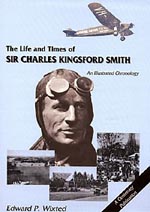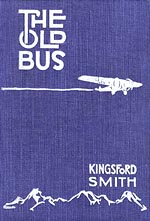
Charles Edward Kingsford-Smith (1897-1935)
Charles Edward Kingsford-Smith was born in Hamilton, Brisbane, Australia on February 9, 1897 and graduated from Sydney Technical College as an Electrical Engineer at age 16. He enrolled in the Australian Military Forces in 1915 firstly serving in the Middle East then in 1917, in France as a fighter pilot where he was awarded the Military Cross for gallantry in action.
In succeeding months, piloting "Southern Cross" he made the first non-stop flight across the Australian Continent and the first flight across the Tasman Sea to New Zealand. In 1929, Kingsford-Smith completed a round-the-world flight and in 1934, he made the first west to east crossing of the Pacific. In November 1935, on a flight from England to Australia, Kingsford-Smith and his co-pilot John Pethybridge disappeared in typhoon weather over the Bay of Bengal.
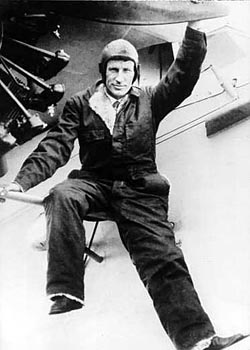 Charles E. Kingsford-Smith before his flight to Australia, San Francisco, CA, USA, May 1928
Charles Kingsford-Smith http://www.abc.net.au Charles Kingsford-Smith has been called the world's greatest aviator. His record breaking flights and almost superhuman flying skills are legendary. Charles Edward Kingsford-Smith was born in Brisbane in 1897, the youngest of seven children. Charles, or 'Chilla' as he was nicknamed was a small, energetic boy who loved adventure and would do anything for a dare. He also loved working with his hands. At the age of 13 he began studying mechanics and electrical engineering at Sydney Technical College. He was a good but not brilliant student and got bored easily. He much preferred to be riding his motor bike. World War 1 burst over Europe and Charles enlisted on his 18th birthday. He couldn't wait to see some action. After fighting at Gallipoli, and a stint as a motor-bike despatch rider, he was chosen to join Britain's Royal Flying Corps which urgently needed pilots. It was 1916 and aeroplanes were new inventions. The planes 'Smithy' learnt to fly were made of fabric, wire and timber. It was something he loved from the very first moment. He wrote home to his parents
"I have discovered one thing about flying and that is that my future, for whatever it may be worth, is bound up with it."Oh, he was made for flying. They say of some aviators, they were born to fly, well 'Smithy' was born to be obsessed by flying. In one of his many flying missions during the war his plane was riddled with bullets. 'Smithy' was shot in the foot and later had three toes amputated. His war days were over. He was presented with the Military Cross by King George and at only 20 years old was a war hero. He travelled to America and worked in Hollywood as a stunt pilot. It was a dangerous occupation and when another stuntman was killed he quit. On returning to Australia in 1921 he was broke. Luckily the aviation industry in Australia was booming so 'Smithy' joined the West Australian Airways flying mail through the outback. But what he really wanted, was to be the first to fly across the Pacific ocean. With borrowed and donated money he went to America, bought a plane and named it 'Southern Cross'. On May 31, 1928, 'Smithy' with co-pilot Charles Ulm, navigator Harry Lyon and radio operator James Warner set off from San Francisco. The crossing was a three-legged marathon in a plane with an open cockpit. The difficulties of a pioneering flight across a featureless ocean, the difficulties of navigation, the difficulties of the weight of the aircraft, the only thing was their eternal optimism. When they reached Brisbane, eighty three flying hours later they had completed the first air crossing of the Pacific. Three hundred thousand people welcomed them when they flew to Sydney. Smithy didn't stop there. Aviators around the world were competing to be the first, the fastest, the best. 'Smithy' continued to break and rebreak records. In 1930 at the age of 32 he flew 16,000 kilometres single handedly and won the England to Australia air race. Two weeks later he married Mary Powell and they were to have a son, Charles. In 1933 after once again breaking the record for solo flight from England to Australia, he was acclaimed as the world's greatest airman. 'Smithy' held more long distance flying records than anyone else on earth. But the adulation couldn't last forever. Later when 'Smithy' pulled out of a race because his plane wasn't ready, he was sent white feathers in the post. The sign of a coward. He was devastated. The press criticised him and his health suffered. It was the most difficult period in his life. At 38 Smithy was a veteran but wanted to prove he still had what it took. So on November 6, 1935, 'Smithy' and Tommy Pethybridge took off from England on what was to be his last record breaking attempt. A day later 'Smithy's' plane disappeared near Burma. It has never been found. Charles Kingsford-Smith pioneered more long distance routes than any pilot in history. He lived and died for flying. He was one of the really genuine achievers, an honest achiever, a pioneering achiever. A man who faced the odds and overcame them. If people think of him as a hero, then they have a good role model.
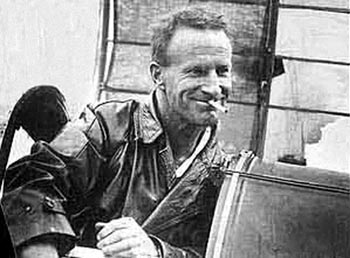 'Smithy'
Charles E. Kingsford-Smith http://users.chariot.net.au Charles Edward Kingsford-Smith was born on 9th February, 1897; his father was a bank manager in Queensland, who later worked with Canadian Pacific Railways in Canada, subsequently returning to Sydney, Australia with his family. Charles attended St. Andrews College Sydney, where he was a choirboy. He continued his studies in study electrical engineering. In World War I, Charles served in the Signal Corps at Gallipoli in 1915 as a despatch rider. He then joined the British RFC (Royal Flying Corps). With 23 Squadron he flew Spads in combat, mainly in a ground or balloon attack role. His first combat mission was on July 13, 1917; in his second, the day after, he downed a German aircraft after the group of eight of which he was part engaged about 20 enemy. He was with the squadron for six weeks, and accumulated four victories. ...more
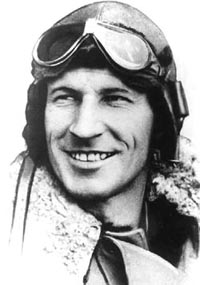 Charles E. Kingsford-Smith download a 500pixel image
History of the original "Southern Cross" http://www.users.bigpond.com The Fokker F.VIIb-3m was derived directly from the single-engined F.VIIa high-wing monoplane. The prototype was built in seven weeks, on the instructions of Anthony Fokker to construct a suitable entrant for him to fly in the 1926 Ford Reliability Tour. The design was also built by A.V. Roe in Britain as the Avro 10. Fokker F.VIIb-3m aircraft were employed by KLM Royal Dutch Airlines, and KNILM in the Far East, to link Amsterdam and Batavia (Djakarta), the longest scheduled air route in the world for many years. The F.VIIb-3m was also operated by various large and small world airlines, including Australian National Airways, who used a number of Avro 10 aircraft. ...more
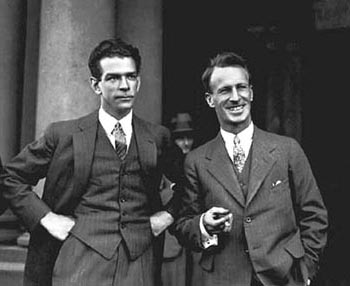 Charles T.P. Ulm and Charles E. Kingsford-Smith
Technology in Australia 1788-1988 The Development of Air Transport : The Trail Blazers http://www.austehc.unimelb.edu.au The foremost of the 'trail blazers' was Charles E. Kingsford-Smith (later Sir). Born in 1897, he joined the AIF in 1915 and saw service in Egypt, Gallipoli and France and was commissioned in the Royal Flying Corps (RFC) in 1917. From then on his career was inextricably mixed with aviation and he alternated between trying to establish and operate air services, and the undertaking of pioneering long distance flights - which brought recognition and, not seldom, funds to finance air services activities. His attempt, together with Maddock and Rundle, to take part in the 1919 England-Australia Air Race was disallowed, due to their lack of navigational experience. After spending a year in the U.S.A. in 1921, Kingsford-Smith founded the Western Australian Airways and provided the first regular Australian airmail service between Geraldton and Derby. In 1926, with fellow pilot C.T.P. Ulm, he undertook a round-Australia flight in 10 days 5 hours - which halved the previous record. ...more
 Charles E. Kingsford-Smith
Famous Fokker Flights Charles E. Kingsford-Smith and the "Southern Cross" : A man and his dream by Leo Bakker http://home-1.worldonline.nl also http://home-1.tiscali.nl Charles Edward Kingsford-Smith was born on February 9, 1897 in Brisbane. Barely eighteen, he volunteered for the Royal Engineers, but when stationed in France he switched to the Royal Flying Corps, getting his license in March 1917. He quickly turned out to be an excellent pilot, but not quite good enough to escape Von Richthofen in his Fokker Dr.I triplane. After recovering from the wounds he had sustained in the crash-landing that followed their confrontation, he served as an instructor for the remainder of the war. With peace also came the first fledling airline companies and after brief spells in Britain and America, Kingsford-Smith returned to Australia to join a succession of airlines. In 1919 Alcock and Whitten-Brown crossed the Atlantic in a war surplus Vickers Vimy and Great Britain and Australia were linked by air in a similar aircraft piloted by Ross and Keith Smith.
It was around this time that Kingsford-Smith began to dream of flying the Pacific from America to Australia, but apart from a lack of funds the state of the art made such a venture completely impractical, because of the far greater distances involved. ...more 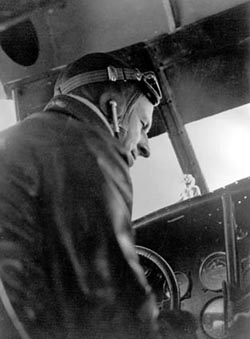 Charles E. Kingsford-Smith aboard the "Southern Cross"
The 1928 flight of the "Southern Cross" Original site cannot now be found - Ed. June 2002 Following the dramatic 1927 flight across the Atlantic by Charles Lindbergh, four men in a three-engine aeroplane called the "Southern Cross" conquered the vastness of the Pacific Ocean. They flew from Oakland in California to Sydney via Hawaii, Fiji and Brisbane. The flight was the brainchild of Australians, Charles Kingsford-Smith , a former WWI pilot, and Charles Ulm who became involved in promoting aviation after the War. Charles Ulm was able to convince Californian businessman G. Allan Hancock to pay for the aeroplane and finance the flight. Kingsford-Smith , 31 years old at the time, was to be the pilot and 30-year-old Ulm the co-pilot. They hired two Americans to join the crew, 41-year-old navigator Harry Lyon and 36-year-old radioman James Warner. Lyon was a graduate of the US Naval Academy and had skippered merchant marine ships before the War. Warner had spent 16 years in the Navy. The "Southern Cross", or the "Old Bus" as it was affectionately known, weighed 6840 kg. This included 4 crew at 291 kg, 3541 kg of benzine and 109 kg of oil. The aeroplane had a wingspan of 23 metres; it was almost 15 metres long and stood 3.9 metres high. It had a cruising speed of 150 kph. For communication there were three transmission sets to send radio signals and two to receive them and four compasses to navigate. The crew was also well prepared for an emergency. If the aircraft had to ditch at sea Kingsford-Smith would dump what fuel was left in the wings and use them as rafts. There were distress signals, water and enough food to last a week on board the aeroplane.
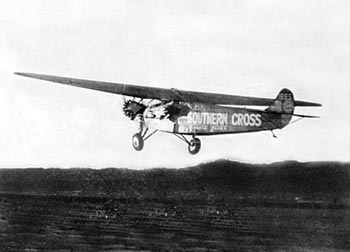 The "Southern Cross" takes off from Oakland, Cal., May 31, 1928
More than a thousand people turned out to watch the "Southern Cross" take off on its first leg from Oakland to Hawaii just before 9.00 am on Thursday May 31 1928. However, the start did not go off without incident. The take-off had to be aborted as Ulm accidentally shut down one engine when his clothing caught in a switch. Field personnel restarted the engine and the South Cross took off for Hawaii. About 480 km into the flight the "Southern Cross" lost its directional radio beam, so for the next 3,300 km navigator Lyon was flying by dead reckoning. The aircraft also flew into heavy cloud but Lyon's experience as a merchant marine and familiarity with the islands assisted them in locating the airfield. The flight from Oakland to Hawaii had taken 27 hours and 28 minutes. After resting in Hawaii the real test was to come. If they were to complete the next leg to Fiji it would be the longest flight ever made across open water. After passing the Equator, the "Southern Cross" ran into strong headwinds and severe storms that blew it off course. The stormy weather continued throughout the day and one of the engines began to run rough. The weather finally improved and the crew managed to regain their bearings. They were able to land on a cricket field in Suva. The flight was just short of 35 hours. The crew left Fiji for Brisbane believing the next leg would be easy. However, they faced some of the worst flying conditions of the entire trip. Ferocious storms tossed their aircraft violently. At times they had to fly just above the waves and Kingsford-Smith admitted there were some very anxious moments. Again they were blown off course. They downplayed their problems on the radio because they did not want to alarm their friends waiting in Brisbane where they landed on Saturday June 9. After an enthusiastic welcome, the "Southern Cross" crew continued on to Sydney the following day. They flew along the coast on the final leg to Sydney where escort pilots met the crew. After the aeroplane landed Kingsford-Smith was greeted in an emotional embrace by his parents. Lyon and Warner stayed back to allow the two Australians to reap the applause they justly deserved until the crowd called for them to come forward. Kingsford-Smith paid tribute to the skill, operation and pluck of his American comrades. The four conquerors of the Pacific were paraded into the city where local dignitaries met them. US President Calvin Coolidge wired a message to Kingsford-Smith saying "Hearty congratulations to you and your companions on successful flight Oakland to Australia. Your brilliant and courageous pioneering has advanced the cause of aviation and strengthened bonds between your commonwealth and our country." Hancock wired Kingsford-Smith saying that the pilot did not need to pay back the money he had put up to finance the trip and that he was giving the "Southern Cross" to Kingsford-Smith and Charles Ulm. Charles Kingsford-Smith was knighted for his services to aviation in the Commonwealth of Australia. He died in 1935 when his plane crashed into the sea off the Burma coast during an attempt to break the England to Australia speed record. Ulm died in 1934 when his plane crashed in the Pacific while attempting to retrace his 1928 flight from Oakland to Australia. Harry Lyon returned to the United States and died in Paris Hill Maine at the age of 78 on 31 May 1963 - 35 years to the day the "Southern Cross" left Oakland for Hawaii. James Warner returned to the United States and died in California aged 79.
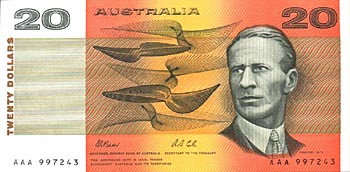 Charles E. Kingsford-Smith : The Man on the 20 Dollar Note download a 1000pixel image
Charles E. Kingsford-Smith : Jubilee Tasman Flight 15th May, 1935 An Epic of Skill, Courage and Endurance - 65 years on by Macarthur Job http://www.airborne.org Crossing the Tasman to New Zealand today is almost as easy as commuting from one Australian city to another. Comfortable jets take us there in a few hours. Sixty-five years ago, the world was still in the age of the ocean liner. The first regular airmail between England and Australia had just begun, and a few adventurous souls were using the primitive air services within Australia. But flying was still generally thought unsafe. Even so, Sir Charles Kingsford-Smith , despite initial failure, still dreamed of running an airline of his own. He had taken part in the first airmail flight from England, but lost out to Qantas in gaining a contract on the new route. An airline linking Australia and New Zealand was being mooted, and Smithy's ambition was to run it. In an attempt to bring matters to a head, a commemorative airmail flight was planned. May 1935 would see the 25th anniversary of the accession of King George V to the throne. The king was an avid stamp collector, so what better way to celebrate his Jubilee than by issuing a special postage stamp and making a Jubilee Flight across the Tasman? ...more
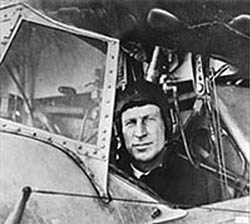 Charles E. Kingsford-Smith aboard the "Southern Cross"
Charles E. Kingsford-Smith - An Illustrated Timeline 1897
Charles Edward Smith (later Kingsford-Smith) is born on February 9 at Hamilton, Queensland, Australia1917
Kingsford-Smith joins the Royal Flying Corps and is awarded the Military Cross for braveryI919
Kingsford-Smith is refused permission to fly from England to Australia in a Blackburn Kangaroo.I920
Kingsford-Smith performs as a stunt pilot in the United States.1922
Kingsford-Smith is appointed Chief Pilot of West Australian Airways.1927
Kingsford-Smith and Charles T.P. Ulm brake the round-Australia record by flying 7,500 miles in I0 days 5 hours 15 min, in a Bristol Tourer.I928
I929
March 31st. Kingsford-Smith , Ulm, Litchfield and McWilliams take off from Sydney to fly to England, but were lost for I2 days at 'Coffee Royal' in north-western Australia. They were found by the aeroplane 'Canberra'.1930
Kingsford-Smith , Evert van Dijk, Paddy Saul and John S.W. Stannage in "Southern Cross" make first successful east-west crossing of North Atlantic from London to New York. From Ireland to Newfoundland, I,900 miles in 3I hours 30 min.I93l
Kingsford-Smith is rescued making the first England-Australia airmail from Koepang in April, and in May takes the first Australia-England air-mail to Akyab.I933
October 4th. Kingsford-Smith breaks the solo England to Australia record flying a Percival Gull monoplane, "Miss Southern Cross", I0,070 miles from London to Darwin in 7 days 4 hours 44 minutes.I934
Kingsford-Smith , Taylor and Stannage repeat the flight to New Zealand and back in the "Southern Cross".1935
May I5th. Kingsford-Smith , P.G. 'Bill' Taylor and John S.W. Stannage attempting to fly to New Zealand in "Southern Cross" sustain engine problems half-way across Tasman Sea. The aircraft and crew are saved by Taylor transferring oil in flight using a leather satchel. 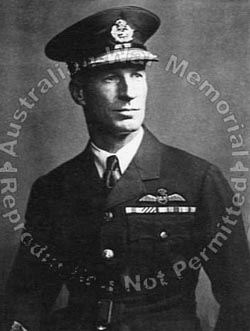 Air Commodore Sir Charles Edward Kingsford-Smith , M.C., D.F.C.
Further Reading
Commemorating the 50th Anniversary of Sir Charles Kingsford-Smith 's June,1927 record round Australia flight and his June,1928 first trans-Pacific flight, San Francisco-Brisbane
Ward McNally's book examines 'Smithy's' attempts to launch a domestic airline, the personal and political complexities surrounding his attempts to win government backing for airmail services, and his need to turn again to record-braking and barnstorming to survive the difficult Depression years. The book contains substantial amount of previously unpublished material. McNally has been helped by Mrs Mary Tully (former Lady Kingford-Smith) and others to fill in some of the gaps in the story.
Smithy : The Kingsford-Smith Story
The Man on the Twenty Dollar Note, Sir Charles Kingsford-Smith
"In the seven years of his research, Ian Mackersey has also made some startling discoveries and has succeeded, from private letters, diaries, government files and from interviews with Smithy's contemporaries, and his widow, in uncovering a wealth of new information, some of it revelationary, about the life and character of the famous aviator." http://www.company.co.nz
The above website notes that the proceeds of the sale of this book will go towards the next expedition to find the "Lady Southern Cross" and all enquiries should be forwarded to: Tom Wixted, 16 Dickens Street, Norman Park, QLD 4170, AUSTRALIA
|
© Copyright 1999-2002 CTIE - All Rights Reserved - Caution |
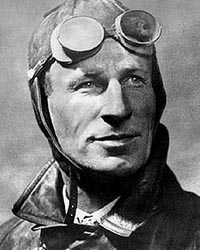

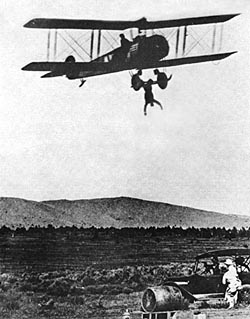
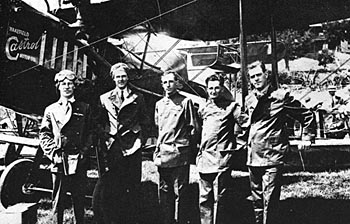
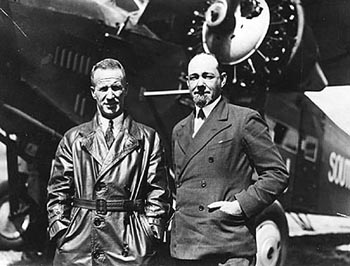
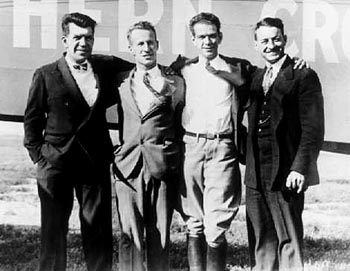
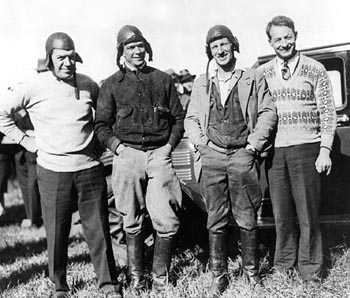
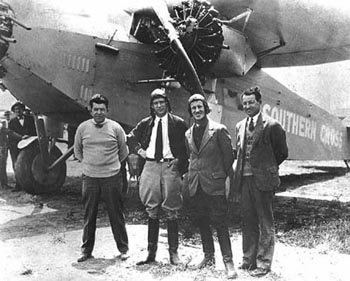
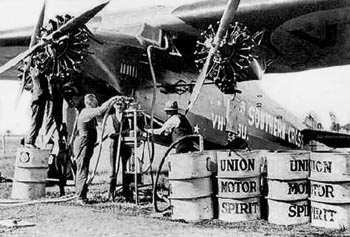
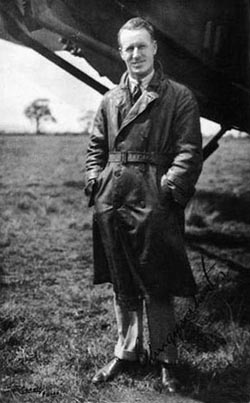
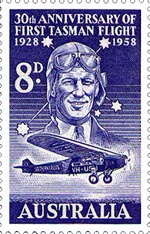
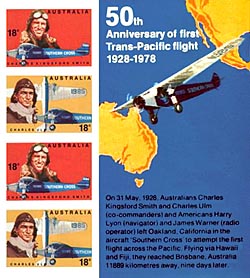
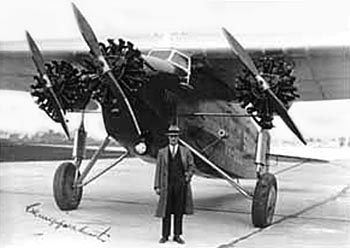
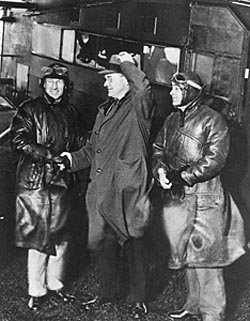

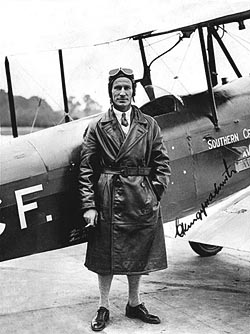
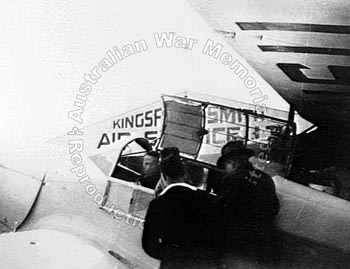
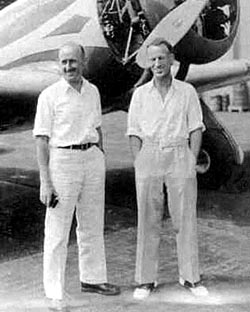
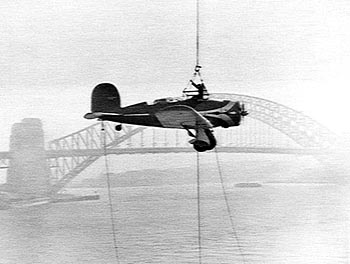
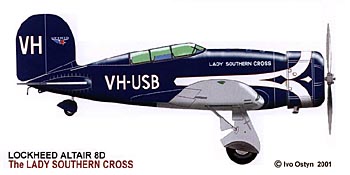
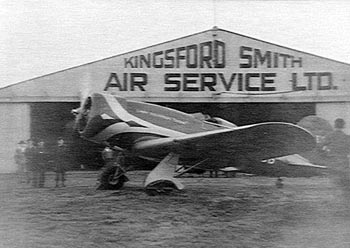
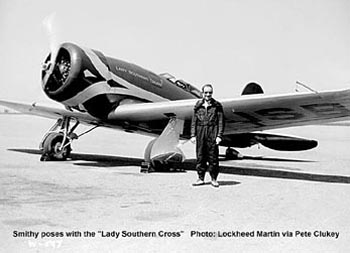

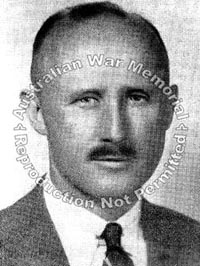
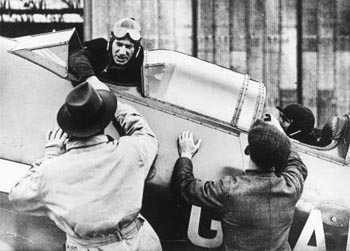
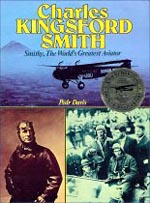 Davis, Pedr
Davis, Pedr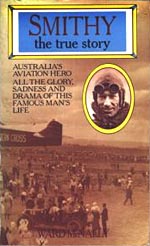 McNally, Ward
McNally, Ward Mackersey, Ian
Mackersey, Ian